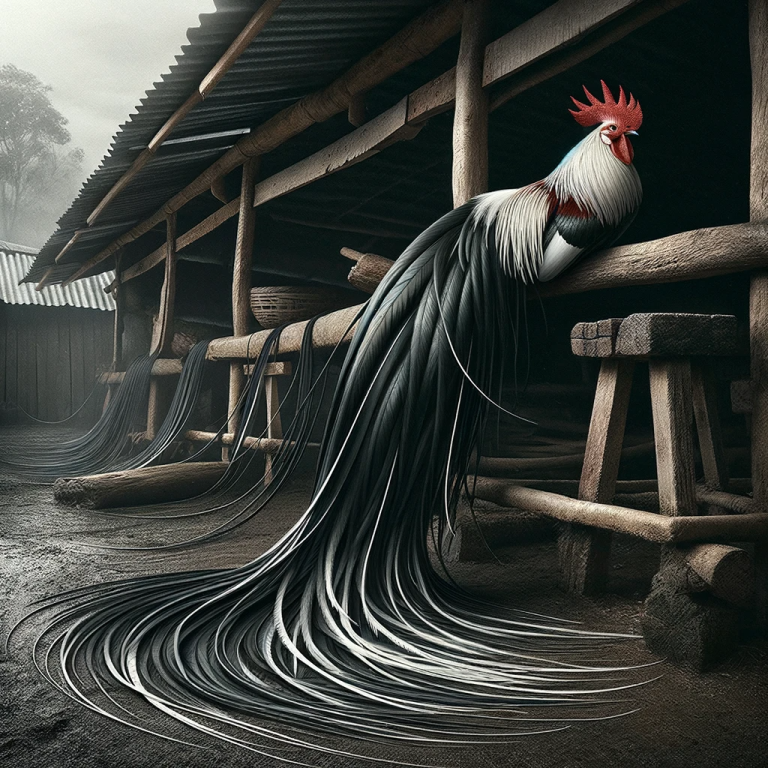In the world of birds, one of the species with the longest tail feathers is the Japanese ornamental long-tailed chicken.
The long-tailed chicken comes in three colors: white, black, and gray-brown. They are naturally very lazy and dislike activity. They require year-round care in specially designed small wooden chicken coops that are clean, hygienic, and equipped with insulation. The chickens perch in high, ventilated areas of the coop, with their tail feathers hanging outside. Their diet consists mainly of fresh vegetable leaves and unpolished rice. However, caretakers must lift their tail feathers twice a week for walks outside the coop to ensure they get sufficient exercise. If their tail feathers get dirty accidentally or if they have parasites, they need to be cleaned thoroughly and disinfected with medication.
Female chickens lay about fourteen to fifteen eggs each in spring and autumn, which are about half the size of ordinary chicken eggs, with a particularly high number of unfertilized eggs, resulting in a very low reproduction rate. During World War II, the Japanese people suffered severe wartime trauma and had no time or inclination to raise chickens or keep birds. So during this period, the once-famous Japanese long-tailed chicken was almost extinct due to the brutal impact of the war, and it was only recently that it started to be bred again. The tail feathers of the long-tailed chicken grow to about a meter each year, and its lifespan is about nine to ten years, so the longest tail feathers can reach over seven meters when the bird stands on a high perch. The long, drooping tail feathers make it beautiful and playful.
Since the long-tailed chicken is a type of chicken, why does it grow such long tail feathers? Speaking of which, there’s an interesting history in biology.
About three hundred years ago, a farmer named Toshie Musashi, living in the village of Daisen, Japan, experimented with hybridizing mountain chickens, mountain birds (a type of quail, belonging to the pheasant order, which is a specialty in Japan, and with a body larger than that of pheasants) and Eastern cocks (a breed of rooster originally from the Tosa region, which had a particularly long crow). At the time, Japanese farmers suffered from the brutal oppression of Japanese feudal power, and Toshie Musashi was forced to devote his hard work to the production of a hybrid chicken with particularly long tail feathers. This hybrid chicken, known as the long-tailed chicken, was given to the local feudal lord, Sanai of the Yamato clan, who, in his joy, greedily demanded even more long-tailed chicken tail feathers, and issued a reward for this. Specifically, the reward was that long-tailed chicken tail feathers could be used to pay heavy taxes and for those who could produce long-tailed chickens with long, beautiful feathers, fodder was provided. From then on, local farmers began to raise chickens and came up with ways to ensure that the tail feathers of long-tailed chickens grew even longer, allowing the long-tailed chickens to breed in the small village.
However, just by natural growth, the tail feathers of long-tailed chickens do not grow particularly long. According to experience in raising them, after male chicks have grown for five or six months, they must first distinguish whether the breed can grow thin, long tail feathers from the feather roots. After July, they consider that chickens can grow long tails, then they remove the feathers along with the roots so they can grow long.

